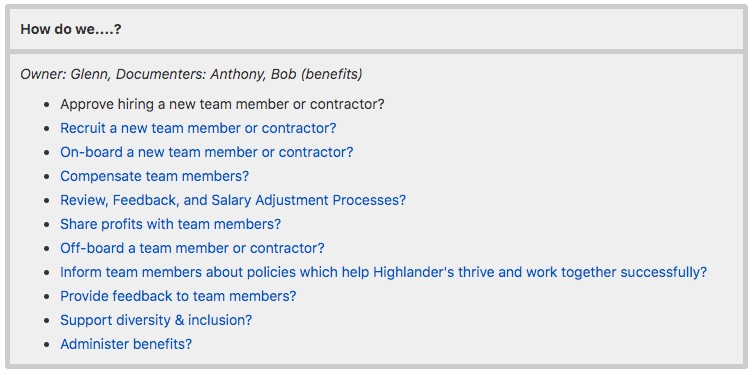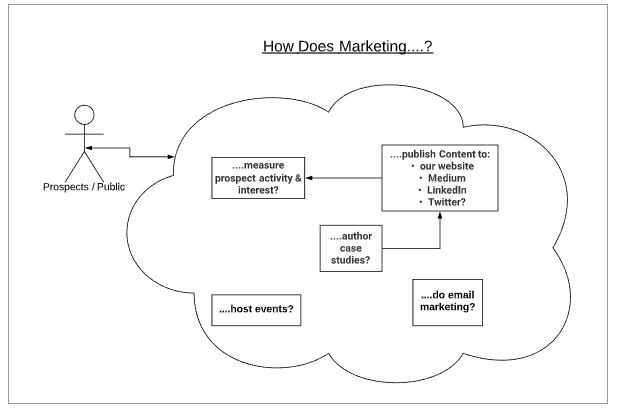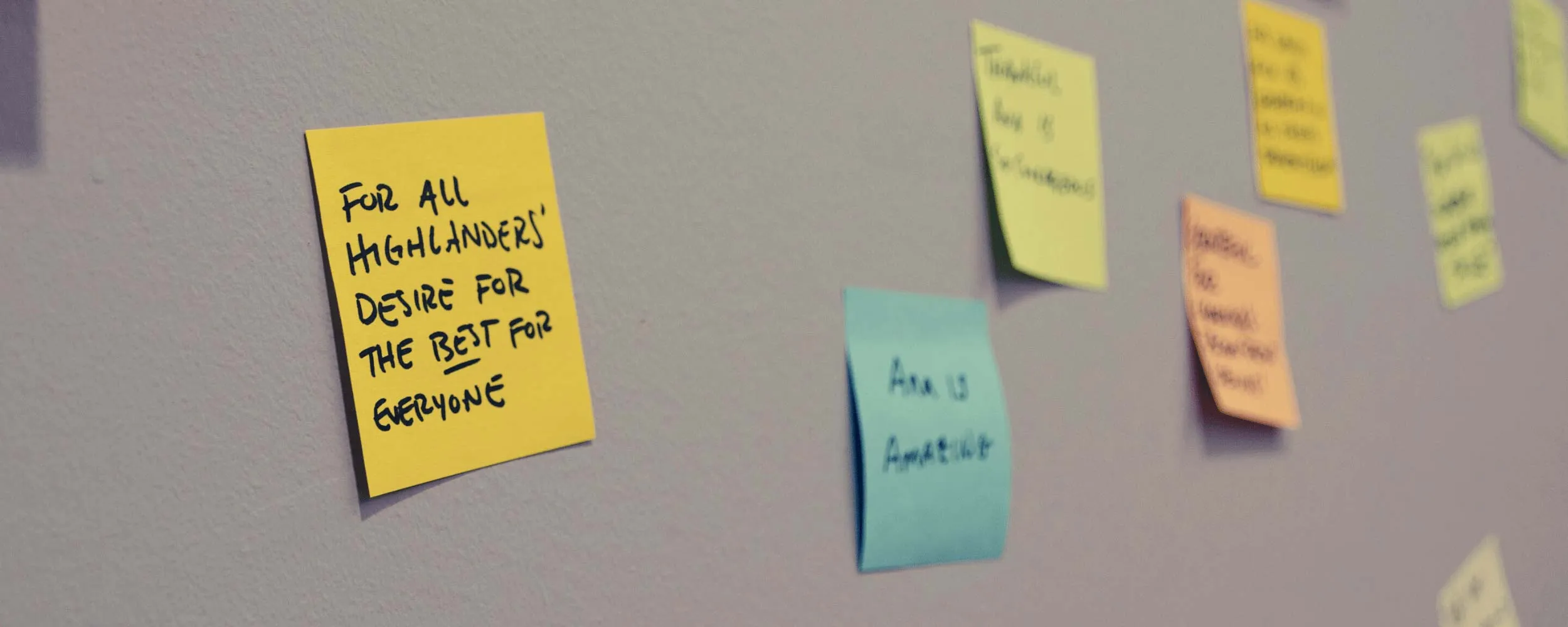To get your company to the next level, everyone needs to be on the same page about how you get stuff done.
In order to do that, the Entrepreneurial Operating System® asks us to consider the following in their book Traction®:
“Do your people know what processes they are following and why? …By deciding what the process is and training everyone to follow it, you will enhance your troubleshooting abilities, reduce your errors, improve efficiency, and increase your bottom line.”
EOS recommends following the 20/80 rule when documenting your core processes; documenting 20% produces 80% of the results.
At Highland, we have first-hand experience putting the process component into action. This article outlines how we documented our core process and the impact it’s had on Highland so far.
First, divide and conquer
In order to create digitally-powered journeys that help people grow, Highland has three client-facing service areas:
Opportunity Exploration, where we primarily focus on customer research.
Concept Creation, where we primarily focus on identifying and shaping new customer value.
Digital Product Development, where we build new digital solutions.
While there is some overlap between the three — project management, for instance — each practice area has its own unique techniques and processes.
In addition to our client-facing practice areas, we also have internal teams that primarily focus on business development, operations, marketing, and infrastructure.
So when it came time to divide up the work of documenting Highland’s core business processes, it only made sense to split this work up so that each practice area and internal team could define their unique workstream.

Our first pass at the process component
My rock for the second quarter of 2019 was to facilitate documenting all of our core processes. As you probably know, a “rock” is an EOS term for one of the three to seven most important things you must get done in the next 90 days. In order to accomplish this rock, we collected our processes under the umbrella of the Highland Solutions Way.
We structured the process documentation by attempting to answer specific questions. Here’s an example of what the questions the Operations team put together.

We also created simple diagrams to accompany the question lists. Here’s one from Marketing:

Each of the practice areas and internal teams followed the same pattern. First we listed out all of the critical questions we could think of to help define what that part of the company did. We then created a diagram to help the person documenting visualize how to answer them.
Then, it was just a matter of execution and accountability. I met with the people responsible for documentation at the beginning of the quarter, and followed up with them throughout the next 90 days to make sure things were moving along. We take rocks pretty seriously at Highland, and made a team effort to make sure we completed this one.
So what was the result?
However, there was an unanticipated side effect. We wound up with lots of pages scattered across multiple spaces in our Confluence wiki. The information was useful, but hard to maintain. In addition, because most of us are “knowledge workers,” we are continuously improving our techniques and incorporating new methods. We’re also extremely pragmatic. For these reasons, we decided to adapt the prescription for the Process Component in favor of one enabling continuous improvement.
Our second pass at the process component
In Q4 of 2019, we decided to take a second pass at some of our previous work.
Our goal was to:
- Make our documented processes easier to maintain and
- To fill gaps or correct misrepresentations in the ways we actually work.
I started with our Project Management practices.
My rock included creating a variety of templates: a project startup checklist, a project completion checklist, an automated budget tracker, and others.
To simplify maintenance, I created a Managing Projects Handbook. This involved pulling in many of the disparate pages we’d created earlier as well as improving the content. To help us improve these descriptions and templates on an ongoing basis, I started a Project Management Guild.
The purpose of the Project Management Guild is to continuously:
- Evolve and improve our PM practices, tools, and templates
- Improve our clients’ experience of working with us
- Provide support to each other in tackling challenging project issue
- Ensure our projects are profitable
I also started a support system we’re calling the Give a Damn Buddy System. We all know how helpful it can be to have a second set of eyes to check things out for you.
Here’s how the Give a Damn Buddy System works
- If you’re playing the Project Manager (PM) role on a project, grab a buddy — another team member who also plays this role — and check-in for 15–30 minutes on a bi-weekly basis.
- Discuss how you’re meeting your commitments, brainstorm on ways to improve, discuss and try to solve any project issue you have, and share new tools and techniques.
- All buddies will update the Highland Way and inform the PM guild when they learn something new that would improve our PM commitments
Things are progressing nicely on all fronts and it feels as if we’ll be able to up our game. We pride ourselves on being a pragmatic and adaptive organization. From our hands-on experience, our tweak to the Process Component seems completely justified — time will tell!
By combining the documentation that the Process Component calls for with ongoing accountability measures like the Project Management Guild and the Give a Damn Buddy System, we’ve been able to turn our documentation into a living, breathing thing that is always up to date (at least as far as project management is concerned).
In its original form, the EOS Process Component helps you create a single source of truth for how things should be done within your organization — which is incredibly valuable on its own. By combining the Process Component with a working group and low-touch 1:1 meetings designed to help our team reflect and grow, our processes have continued to improve, creating an even-better working experience for Highlanders and our clients.
Have questions about self-implementing EOS within your own organization? Don’t hesitate to get in touch.
EOS References



